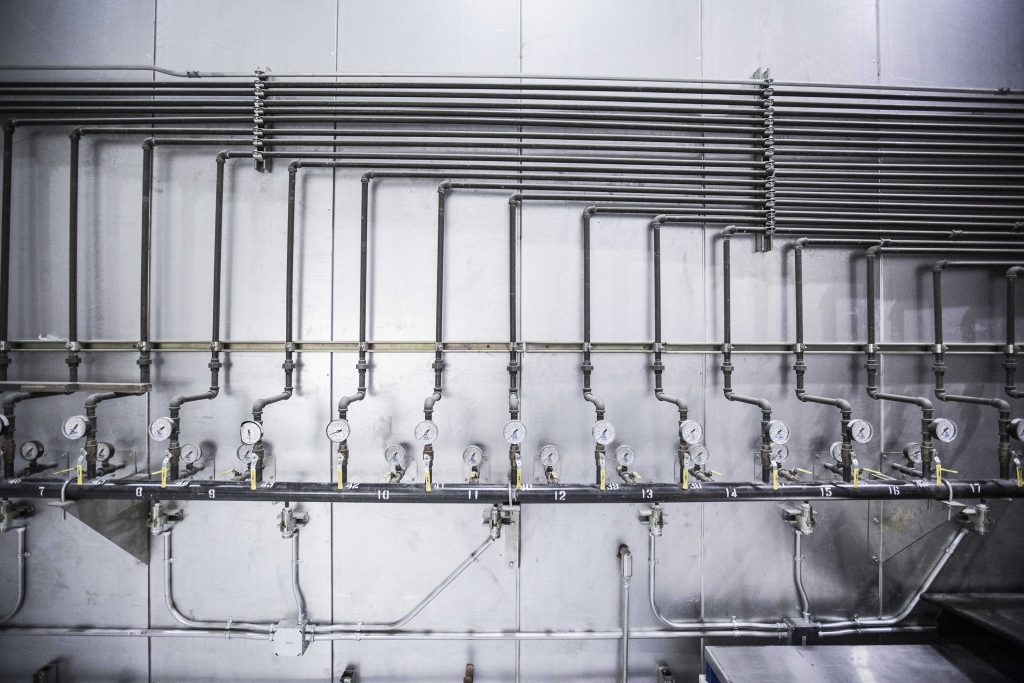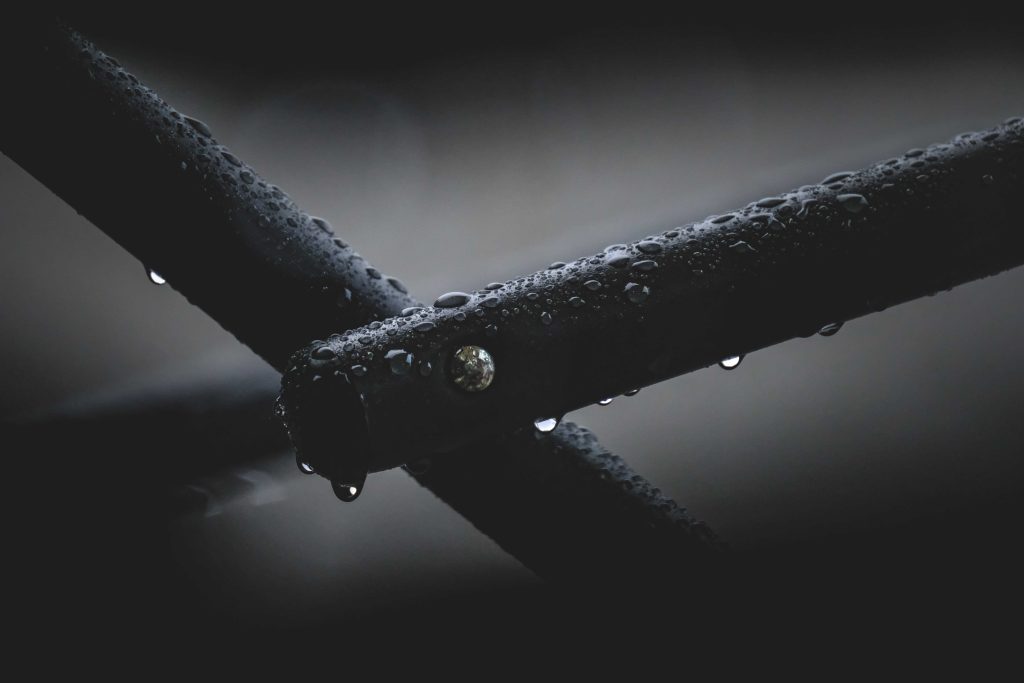The Hidden Legionella Hazards in Building Plumbing Systems
While cooling towers often get the most attention for Legionella risks, the complex internal plumbing systems of large facilities can also harbour dangerous bacteria if not properly maintained.
Pipe Testing Services can advise on, and resolve issues like; corrosion, scale build-up, low flow zones and inconsistent temperatures. These issues enable conditions for Legionella to multiply within potable water systems. Only proactive maintenance and water system management can help in reducing these hazards.

How Plumbing Systems Promote Legionella Proliferation
Several factors inherent to large internal plumbing networks make them prone to Legionella growth:
- Older pipe materials like iron, steel and copper corrode over time as water flows through them. This corrosion releases nutrients like iron that Legionella bacteria thrive on.
- Pipes also develop internal mineral scale and sediment build up that offers hiding places and nutrients for Legionella. Scaled pipes restrict flow, leading to areas of water stagnation.
- Stagnant water in low flow or dead leg areas of plumbing enables bacterial growth. With no water circulation, disinfectant residuals cannot reach or act upon bacteria in these areas.
- Inconsistent water temperatures are common throughout large, complex plumbing networks. Due to things like inadequate insulation, oversized pipes and excessive lengths of piping, hot water loses heat as it flows to fixtures. Cold water also warms up, creating temperatures perfect for Legionella. For proliferation, Legionella bacteria thrive best between 20°C and 50°C.
- Storage tanks, strainers, filters and biofilm also give bacteria a haven to multiply before being released into the system. Tanks provide a large volume of tepid water for colonisation while strainers and filters accumulate nutrients.
Once Legionella colonises parts of the internal water system, the bacteria can spread throughout the network, released whenever taps and showers are activated.
Warning Signs of Legionella in Plumbing Systems
Facility managers should watch for these indicators that Legionella may be growing within their plumbing:
- Discoloured or smelly water
- Debris or sediment in water
- Build-up of biofilm in pipes, tanks, etc.
- Positive Legionella test results
- Cases of Legionnaires’ disease associated with the facility
Areas of Plumbing Systems Most at Risk
Specific locations within plumbing networks tend to be higher risk for Legionella:
- Areas with long piping runs where water stagnates
- Infrequently used guest rooms and bathrooms
- Decorative fountains or water features
- Equipment with water spray that can aerosolise bacteria
Facility managers should pay particular attention to monitoring and maintaining these vulnerable areas.
Plumbing System Design Considerations

When designing or renovating plumbing systems, minimise Legionella risks by:
- Eliminating dead legs and capped pipes that allow stagnation
- Insulating tanks and piping to maintain temperatures
- Using PID-controlled thermostatic mixing valves at outlets
- Selecting pipe materials that limit corrosion and scale
Proper plumbing system design is crucial to control hazards.
Critical Plumbing System Maintenance
To minimise the risk of Legionella, facilities need comprehensive maintenance programmes for their internal plumbing. The UK’s Health and Safety Executive (HSE) provides guidelines on best practices in their Approved Code of Practice L8. At PTS, we can help alleviate these issues, and carry out remedial works on plumbing systems – here are a few of the areas in which we help client’s daily:
- Remove scale and corrosion. Techniques like pipe relining help stop further build-up while cleaning removes existing scale. This eliminates nutrients and hiding places for Legionella.
- Regularly flush infrequently used taps, showers, etc. Stagnation allows Legionella to thrive, so prompt flushing maintains flow.
- Insulate pipes properly to prevent heat loss and temperature fluctuations that enable bacterial growth.
- Survey systems to identify problem areas like dead legs and remove them. Dead legs have no flow and should be cut out.
- Clean and disinfect water tanks, strainers, filters and TMVs which can harbour bacteria.
- Maintain optimal residual disinfectant levels (like chlorine) within target ranges throughout all system piping.
- Replace ageing system components like valves, pumps and tanks proactively to prevent failures that compromise water quality and flow.
- Document all maintenance activities thoroughly. Logs prove to auditors that control measures are being implemented properly.
How Pipe Testing Services Can Help Maintain Plumbing Systems
With over 20 years’ of experience maintaining client plumbing systems across the UK, Pipe Testing Services offers complete solutions for controlling Legionella risks:
- Testing water quality and performing risk assessments to identify hazards
- Pipe cleaning, relining and disinfection to remediate underlying issues
- Temperature mapping to pinpoint areas with improper heating that enable bacterial growth
- Custom flushing programmes tailored to each facility’s water usage patterns
- Supplying effective plumbing disinfectants like chlorine dioxide
- Providing log books and recordkeeping for compliance audits
Don’t allow plumbing hazards to go unchecked – contact Pipe Testing Services to ensure your water systems are safe. As leaders in Legionella control, we use best practices and the latest technology to remediate risks. Healthier plumbing means healthier facilities.
Don’t wait for bacteria like Legionella to take hold – be proactive. Contact Pipe Testing Services for a full water system assessment. Our experts can survey your plumbing network, identify hazards, and create a maintenance plan tailored to your needs.
We provide specialist tools like pipe cameras for detailed internal inspection. Our cutting-edge techniques like chlorine dioxide disinfection and remote system monitoring keep clients compliant and safe
Contact PTS today to have one of our experts assess your cooling towers and risks. We can develop a cost-effective maintenance plan compliant with all UK guidance.
Phone: 01922 451646
Email: enquiries@legionellatestingservices.co.uk
Address: Unit 27 Birchbrook Industrial Estate, Shenstone, Lichfield, Staffs, WS14 0DJ
FAQs
The HSE recommends testing water at least quarterly from the most distal outlets and other high risk locations. More frequent testing may be needed if results are positive.
Store hot water above 60°C and distribute it above 50°C to control Legionella growth. Lower temperatures enable proliferation.
TMVs should be inspected and tested at least annually to ensure they are operating within the correct temperature range.
Yes, Legionella is sometimes detected in public water mains. Facilities should sample incoming water to monitor for hazards.
Preventing growth involves ongoing control measures. Eradication requires temporarily raising temperatures, flushing, disinfecting, and rebuilding the microbiome.
